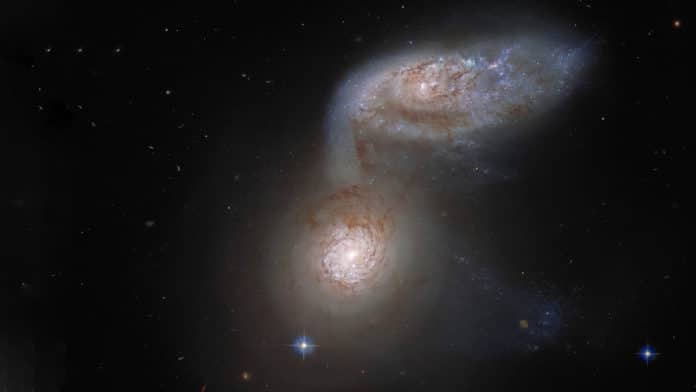NASA/ESA’s Hubble Space Telescope captured two interacting galaxies that are so intertwined, named Arp 91. Each galaxy has its names: the lower galaxy, which looks like a bright spot, is NGC 5953, and the oval-shaped galaxy to the upper right is NGC 5954.
The dance of these galaxies takes place more than 100 million light-years from Earth in the constellation of Serpens. Both galaxies are spiral galaxies that differ in shape due to their orientation with respect to Earth.
Arp 91 is the perfect example of galactic interaction. NGC 5953 is tugging at NGC 5954. The immense gravitational attraction of the two galaxies is causing them to interact. Such gravitational interactions are common and an essential part of galactic evolution.
Astronomers think that the collision between two spiral galaxies gives birth to another type of galaxy, known as elliptical galaxies.
As reported in the blog, “These extremely energetic and massive collisions, however, happen on timescales that dwarf a human lifetime. They take place over hundreds of millions of years, so we should not expect Arp 91 to look any different throughout our lifetimes!”
